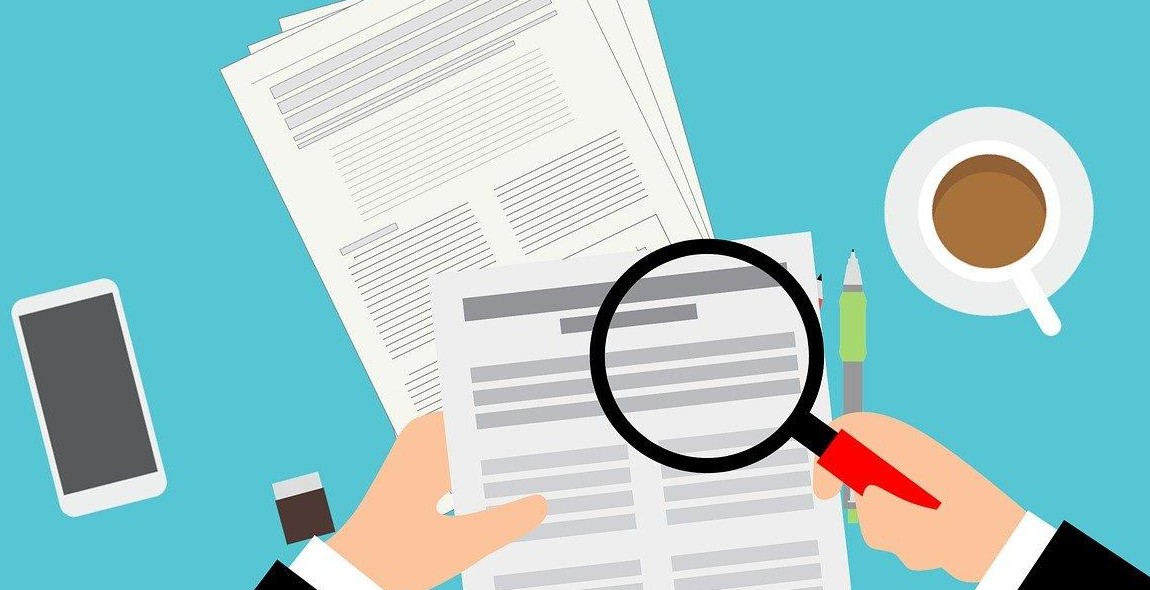Introduction: How to Create a Budget and Stick to It
Financial planning is a crucial aspect of our lives that is often overlooked. It involves creating a budget, managing expenses, and saving money for future needs. Without proper financial planning, it is easy to fall into debt and struggle to make ends meet. However, with the right strategies and tools, anyone can learn how to create a budget and stick to it.
Why is Financial Planning Important?
Financial planning is essential because it helps individuals and families to achieve their financial goals. Whether it is saving for a down payment on a house, paying off debt, or planning for retirement, having a solid financial plan in place can make all the difference. Moreover, financial planning can help to reduce stress and anxiety around money issues, improve financial literacy, and increase overall financial well-being.
Creating a budget is the first step in financial planning. It involves tracking income and expenses, identifying areas where spending can be reduced, and setting financial goals. However, sticking to a budget can be challenging, especially when unexpected expenses arise. That is why it is essential to have strategies in place to help stay on track.
- Use cash envelopes to manage spending
- Automate savings and bill payments
- Track your spending regularly
In this article, we will explore these strategies and more, to help you create a budget and stick to it. With the right tools and mindset, anyone can achieve financial success and security.

Assessing Your Finances
Before you can create a budget, it’s important to assess your current financial situation. This involves gathering your financial information, calculating your income and expenses, and tracking your spending.
Gathering Your Financial Information
The first step in assessing your finances is to gather all of your financial information. This includes bank statements, credit card statements, bills, and any other financial documents you have. You’ll want to know exactly how much money is coming in and going out each month.
Make a list of all of your assets, including your savings accounts, investment accounts, and any property you own. Then, make a list of all of your debts, including credit card debt, student loans, and any loans you have taken out.
Calculating Your Income and Expenses
Once you have gathered all of your financial information, it’s time to calculate your income and expenses. Start by calculating your total monthly income, including your salary, any bonuses, and any other sources of income you have.
Next, make a list of all of your monthly expenses. This includes everything from your rent or mortgage payment to your utility bills, groceries, and entertainment expenses. Be sure to include any irregular expenses, such as car repairs or medical bills, as well.
Once you have your list of income and expenses, subtract your total expenses from your total income. The result will be your monthly disposable income. This is the amount of money you have left over each month after paying all of your expenses.
Tracking Your Spending
Now that you know how much money you have coming in and going out each month, it’s important to track your spending. This will help you identify areas where you may be overspending and where you can cut back.
One way to track your spending is to keep a daily log of everything you spend. This can be done using a notebook or an app on your phone. Be sure to include even small purchases, such as a cup of coffee or a snack from a vending machine.
You can also use budgeting software to track your spending. Many banks offer online budgeting tools that will automatically categorize your expenses and give you a clear picture of where your money is going each month.
| Category | Monthly Amount |
|---|---|
| Housing | $1,200 |
| Utilities | $200 |
| Groceries | $400 |
| Transportation | $300 |
| Entertainment | $100 |
By assessing your finances and tracking your spending, you’ll be able to create a budget that works for you and your lifestyle. Stick to your budget, and you’ll be on your way to achieving your financial goals.

Creating a Budget
Creating a budget is an essential step towards achieving financial stability. It involves setting financial goals, choosing a budgeting method, and creating a budget plan.
Setting Financial Goals
The first step in creating a budget is setting financial goals. These goals should be specific, measurable, attainable, relevant, and time-bound (SMART). Examples of financial goals include paying off debt, saving for a down payment on a house, or building an emergency fund.
When setting financial goals, it’s important to prioritize them. Start with the most important goal and work towards the least important. This will help you focus your resources on achieving the most significant goals first.
Choosing a Budgeting Method
There are several budgeting methods to choose from, depending on your preference and financial situation. Some popular methods include:
- The Envelope Method: This involves allocating cash for each budget category and placing it in an envelope. Once the cash is gone, you can’t spend any more in that category.
- The 50/30/20 Method: This involves allocating 50% of your income to needs, 30% to wants, and 20% to savings and debt repayment.
- The Zero-Based Budget: This involves allocating all income towards expenses, savings, and debt repayment until every dollar is accounted for.
Creating a Budget Plan
Once you’ve set your financial goals and chosen a budgeting method, it’s time to create a budget plan. Start by tracking your expenses for a month to get an idea of where your money is going. Then, use your chosen budgeting method to allocate funds towards your goals.
When creating a budget plan, it’s important to include all expenses, including fixed expenses like rent or mortgage payments and variable expenses like groceries and entertainment. Be sure to also include savings and debt repayment in your budget plan.
| Expense Category | Budgeted Amount | Actual Amount |
|---|---|---|
| Rent/Mortgage | $1,200 | $1,200 |
| Groceries | $400 | $350 |
| Entertainment | $100 | $150 |
| Savings | $300 | $300 |
| Debt Repayment | $200 | $200 |
| Total | $2,200 | $2,200 |
Creating a budget plan is just the first step. It’s essential to monitor your expenses regularly and adjust your budget as needed. Remember, the goal of budgeting is to achieve financial stability and reach your financial goals.

Sticking to Your Budget
Creating a budget is just the first step towards achieving financial stability. The real challenge lies in sticking to it. Here are some strategies to help you stay on track:
Avoiding Impulse Purchases
One of the biggest obstacles to sticking to a budget is impulse purchases. We’ve all been there – you see something you like, and before you know it, you’ve made an unplanned purchase that blows your budget out of the water. To avoid this, it’s important to be mindful of your spending habits. Before making a purchase, ask yourself if it’s something you really need or if it’s just a want. If it’s a want, consider waiting a few days before making the purchase. This will give you time to reflect on whether it’s worth the money and if it fits into your budget.
Tracking Your Progress
Another important strategy for sticking to your budget is tracking your progress. This means keeping track of your income and expenses and comparing them to your budget on a regular basis. There are many tools available for tracking your finances, from spreadsheets to budgeting apps. Find one that works for you and make it a habit to update it regularly. This will help you identify areas where you may be overspending and make adjustments before it’s too late.
Adjusting Your Budget
Finally, it’s important to remember that your budget is not set in stone. Life happens, and unexpected expenses can arise. When this happens, it’s important to be flexible and adjust your budget accordingly. This may mean cutting back in other areas or finding ways to increase your income. The key is to be proactive and make adjustments before you find yourself in a financial bind.
| Avoiding Impulse Purchases | Tracking Your Progress | Adjusting Your Budget |
|---|---|---|
| Be mindful of your spending habits | Keep track of your income and expenses | Be flexible and adjust your budget |
| Ask yourself if it’s a want or a need | Compare your finances to your budget regularly | Find ways to increase your income |
| Wait a few days before making an unplanned purchase | Identify areas where you may be overspending | Cut back in other areas if necessary |
By following these strategies, you can create a budget that works for you and stick to it over the long term.

Additional Tips for Financial Planning
Building an Emergency Fund
One of the most important aspects of financial planning is building an emergency fund. This fund should ideally cover at least six months’ worth of living expenses. It will act as a safety net in case of an unexpected job loss or medical emergency. You can start building your emergency fund by setting aside a small amount each month and gradually increasing it over time.
Paying Off Debt
Debt can be a major obstacle to achieving financial stability. One of the best ways to tackle debt is to create a debt repayment plan. Start by listing all your debts and their interest rates. Then, prioritize paying off the debts with the highest interest rates first. Consider consolidating your debts into one loan to simplify your payments and potentially lower your interest rates.
Investing for the Future
Investing is an important part of financial planning. It is important to start investing early to take advantage of compounding returns. Consider investing in a mix of stocks, bonds, and mutual funds to diversify your portfolio. It is also important to regularly review and adjust your investment strategy based on your financial goals and risk tolerance.
| Tip | Description |
|---|---|
| Build an Emergency Fund | Set aside a small amount each month to gradually build a fund that covers at least six months’ worth of living expenses. |
| Pay Off Debt | Create a debt repayment plan by listing all debts and prioritizing paying off those with the highest interest rates first. Consider consolidating debts to simplify payments and potentially lower interest rates. |
| Invest for the Future | Start investing early to take advantage of compounding returns. Diversify your portfolio by investing in a mix of stocks, bonds, and mutual funds. Regularly review and adjust your investment strategy based on your financial goals and risk tolerance. |
